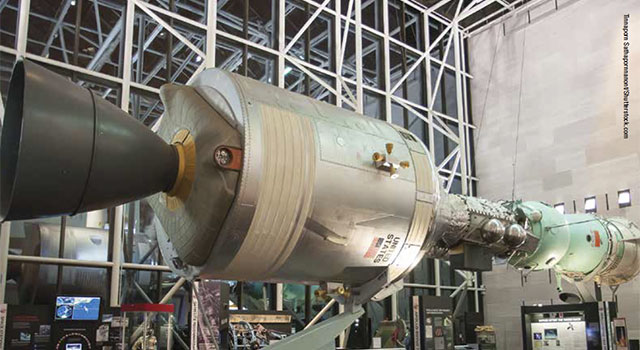
Secure the Perimeters
- By Ralph C. Jensen
- Jun 01, 2017
Every major metropolitan area in the United States has
a museum of one sort or another. According to the
government, there are more than 35,000 museums in
the United States. The types of museums are as varied
as the states they call home.
One thing they do have in common is security. All museums have
some form of security in place to protect and secure their presence.
At the National Museum and American History, there are security
measures in place to ensure visitors’ safety and the protection
of the objects in the museum. Visitors will be greeted upon entry by
one of several security staff who will conduct a thorough but speedy
hand-check of all bags, briefcases, purses, strollers and containers.
All visitors are required to walk through a metal detector. Those who
are unable to go through the metal detector will be hand-screened
with an electronic wand by security staff.
The National Park Service has an extensive security protocol for
its numerous locations nationwide, though they do stress an extensive
layered approach.
Overall responsibility for protecting the park’s museum collection
rests with the superintendent, while museum and law enforcement
staff share direct day-to-day responsibility. Nevertheless, all park
employees––permanent, seasonal, salaried, or volunteer––are part of the park’s security system and have security responsibilities that
should be reflected in the park’s standard operating procedures.
A comprehensive security system combines policies, procedures,
personnel and hardware to protect museum collections from unexpected
losses caused by crime, negligence, fire, or other catastrophic events.
There are no cookbook solutions for security problems, and no
single recipe will turn out a perfect security system every time. Each
park must develop its own system. Every park is unique, faces different
threats, has different short-term objectives, and has different
resources available. While security concepts are mostly common
sense, applying them effectively requires care, consideration and
experience.
In the museum setting, guarding the perimeter is vital. The best
way in which to avoid interfering with the art experience, while keeping
the art open and accessible, is by controlling the perimeter. Protecting
the exterior of a museum leads to a more relaxing interior. To
support these efforts, metal detectors and bag checks are a notable
means to reduce the risk of damage within gallery walls.
When visitors’ bags are checked or they are advised to leave their
belongings at the entrance so that accidents are less likely to occur.
Nevertheless, to effectively guard the perimeter, a security threat assessment
must be conducted to determine potential threats to the
museum’s operations. During an assessment, any vulnerabilities the
museum may have will be noted. The necessary measures to secure
and safeguard against these vulnerabilities will also be presented.
At the National Air and Space Museum, the commitment is to visitor
safety. The security staff have measures in place to keep you and the
objects of the museum protected. Upon arriving at the museum you
can expect a full security screening similar to what you might experience
at the airport, except you can keep your shoes and belts on.
Here’s What to Expect
X-ray. Bags, jackets, briefcases, purses, containers, and pocket contents
will go through X-ray machines.
Metal detector. Visitors will be asked to go through a metal detector.
Those who are physically unable to do so will be hand-screened
with an electronic wand.
Security staff. Keep in mind, the professional staff is here to
help visitors.
At the National Museum of African American History and Culture,
everyone’s security and safety are paramount, and all visitors
are required to pass through screening at the entrance to the Museum.
During the security process, you are greeted by one of our security
personnel who conduct a thorough but speedy hand-check of
all bags, briefcases, purses, strollers, and containers. All visitors are
required to walk through a metal detector. Those visitors unable to
go through the metal detector will be hand-screened with an electronic
wand by security staff.
America’s museums house the treasures and heritage of our country’s
fabric. You know there is security in each of these facilities, and
you have to hope they worked side by side with
a knowledgeable security professional for equipment
installation. Protection of our nation’s story
is paramount, and sadly, completely necessary
to preserve the past.
This article originally appeared in the June 2017 issue of Security Today.